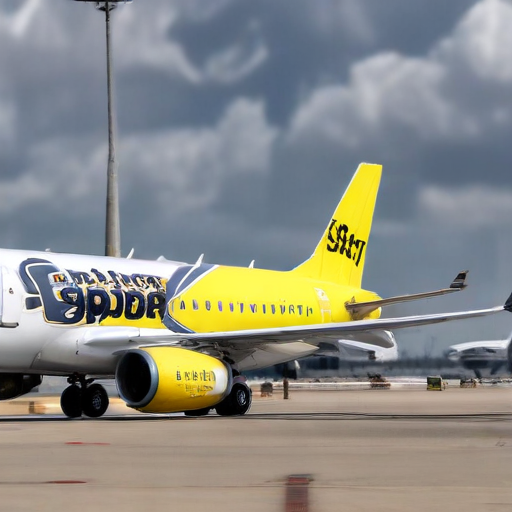Spirit Airlines announced on Monday that it has filed for Chapter 11 bankruptcy protection as part of its effort to recover from the adverse effects of the pandemic on travel, increased competition from larger airlines, and a failed merger attempt with JetBlue. This move makes Spirit the largest budget airline in the U.S. to enter bankruptcy, having reported losses exceeding $2.5 billion since 2020 and facing over $1 billion in debt payments due in 2025 and 2026.
Despite the bankruptcy filing, the airline reassured customers that flights will continue normally and that they can still book travel and use frequent-flyer points as usual. Employees and vendors will also continue to be compensated during this period. Spirit has lined up a $350 million equity investment from current bondholders and plans to convert $795 million of their debt into equity to help support the restructuring process. Additionally, bondholders will extend a $300 million loan, combined with Spirit’s remaining cash, to aid in the transition.
Following news of potential bankruptcy discussions, Spirit’s shares fell by 25%, reflecting the turmoil surrounding the airline. Although Spirit has seen a 2% increase in passenger numbers during the first half of the year compared to the previous year, fares have decreased by 10%. This shift has significantly impacted the airline’s revenue, which has seen a near 20% decline amid rising operational costs and intensified competition.
To adapt to the evolving market, Spirit has recently introduced bundled fares that include various amenities, moving away from the traditional model of low base fares with extra charges for add-ons. This change is a response to mounting pressure from competitors who have attracted Spirit’s budget-friendly clientele. Additionally, the airline is cutting its flight schedule by nearly 20% for the last quarter of the year to help stabilize fares, although analysts suggest that this may primarily benefit its competitors.
Spirit has faced operational challenges, including grounding several Airbus jets due to required repairs on Pratt & Whitney engines, which has led to the furlough of some pilots. The airline’s relatively young fleet has made it an attractive candidate for future mergers, although a previous attempt by Frontier Airlines to merge with Spirit was obstructed by the Justice Department and later abandoned.
Historically, U.S. airline bankruptcies have been influenced by various factors, including competitiveness, labor costs, and fluctuating fuel prices. While some airlines have vanished following bankruptcy, others have managed to emerge stronger through strategic restructuring.
In the midst of these changes, there remains a glimmer of hope for Spirit Airlines as it navigates this challenging period. The support from bondholders and the restructuring efforts may position the airline for a potential revival, allowing it to innovate further in the competitive landscape and cater to the evolving preferences of travelers.
Overall, this situation illustrates the resilience of the airline industry and its capacity for recovery and adaptation in the face of adversity, highlighting the complexities of operating within a volatile market.
